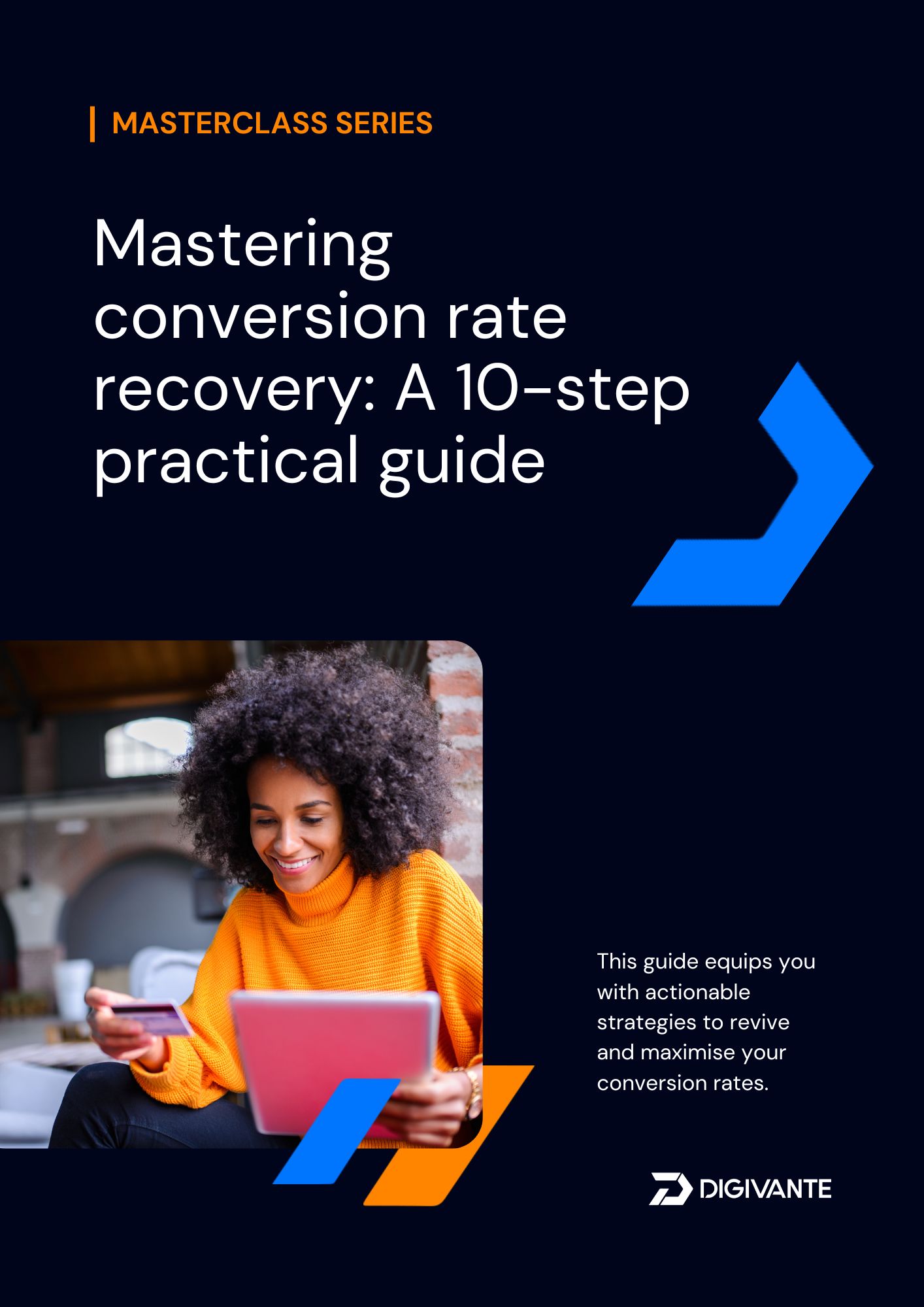In the fiercely competitive digital landscape, Conversion Rate Optimisation (CRO) is the key to unlocking higher revenue and business growth. To stay ahead, businesses must adopt cutting-edge strategies and techniques that go beyond traditional methods. Exploratory testing brings a new level of skill and insight to CRO, offering a dynamic and agile approach to optimise website performance continually.
This article explores the significance of exploratory testing in CRO and its potential to drive real changes in conversion rates. We will delve into the benefits of exploratory testing for ‘agile’ companies, discuss its role as part of a wider testing strategy, and highlight the importance of choosing the right testing agency for successful implementation.
Why CRO should be a continuous process
The days of considering CRO as a one-off project are long gone. In today’s digital world, characterised by fragmented devices and various browsers, businesses need to embrace CRO as an ongoing process. Standard, one-size-fits-all CRO solutions are no longer sufficient to address the ‘long tail’ of potential issues that might be hindering growth. To improve conversion rates significantly, businesses must adopt a multidisciplinary approach, leveraging a full range of skills and expertise.
An essential aspect of CRO is understanding user behaviour and preferences. It’s not enough to focus solely on driving traffic to a website; businesses must focus on optimising the user experience and encouraging visitors to take the desired actions.
This is where exploratory testing plays a crucial role. By allowing skilled testers to freely explore a website or app, this methodology can identify user pain points, discover potential bottlenecks, and reveal areas for improvement.
The ability to adapt to changing market conditions and user preferences is vital for businesses seeking sustainable growth. Consumer behaviour is continually evolving, and what works today might not be as effective tomorrow. Embracing CRO as an ongoing process ensures that businesses stay ahead of the curve, constantly iterating and refining their strategies to meet user expectations.
What is exploratory testing?
Exploratory testing is an agile methodology that empowers skilled testers to freely explore a website Unlike traditional scripted or automated testing, exploratory testing involves simultaneous test design and execution. This approach allows testers to follow their instincts, creativity, and industry knowledge to uncover potential undiscovered bugs and usability issues.
By replicating real-world user behaviour and decision-making, exploratory testing goes beyond pre-defined scripts, revealing insights that can significantly impact conversion and revenue.
In scripted testing, testers follow predefined test cases, leaving limited room for unexpected scenarios or issues that may arise in real-world usage. On the other hand, exploratory testing provides a more dynamic and organic testing experience. Testers can mimic the behaviour of actual users, clicking on various elements, interacting with the site in different ways, and observing how the website responds. This approach allows for a more comprehensive examination of the user experience and potential areas of improvement.
The exploratory testing process involves testers continuously learning about the website under examination as they explore it. This learning process helps them identify potential usability issues and bottlenecks that might not be apparent during scripted testing. By immersing themselves in the user’s shoes, testers gain valuable insights into how the website performs in real-world scenarios.
For a deeper dive into the concept of exploratory testing, explore our dedicated blog on ‘What is exploratory testing?’
Deep CRO insights for ‘Agile’ companies
Ongoing exploratory testing holds immense potential to optimise conversion rates for ‘agile’ companies in various ways:
- Proactively protecting the brand: Exploratory testing helps spot new issues, bugs, and poor customer experiences resulting from dynamic and continuous website changes. By identifying problems before customers encounter them, businesses can proactively protect their brand reputation.
- Spotting new conversion opportunities: Continual exploratory testing enables the discovery of new opportunities to enhance conversion rates within real-world customer journeys. By uncovering these opportunities early on, businesses can gain a competitive edge.
- Creating collaboration between testers and developers: Exploratory testing fosters a more collaborative and effective relationship between testers and developers. Testers can provide real-time feedback, enabling development teams to prioritise optimisation efforts and even propose new features and functionalities.
- Understanding real-world user behaviour: One of the primary benefits of exploratory testing is its ability to replicate real-world user behaviour and decision-making. This deep understanding of how users interact with the website allows businesses to optimise the user experience based on actual user preferences.
- Identifying hidden usability issues: Traditional scripted testing may miss certain usability issues that only surface during real-world usage. Exploratory testing uncovers these hidden issues, enabling businesses to address them promptly and enhance overall user satisfaction.
- Continuous improvement: Exploratory testing aligns seamlessly with the Agile approach to development and testing. It fosters a culture of continuous improvement, where businesses can iterate and refine their strategies based on the feedback and insights gained through exploratory testing.
To delve further into the mechanics of exploratory testing, don’t miss our blog post on ‘How exploratory testing works’.
Probing conversion woes through exploratory testing
When grappling with a sudden drop in conversion rates, understanding the underlying causes becomes paramount. Exploratory testing emerges as a potent ally in such scenarios, capable of unearthing critical conversion issues or clusters of problems that obstruct customer conversions. If the root of plummeting conversion rates remains elusive, exploratory testing can offer invaluable assistance.
Ongoing exploratory testing has the potential to reveal why conversion rates are faltering. By surfacing hidden hurdles that deter customers from converting, this methodology shines a light on user pain points, bottlenecks, and areas for enhancement. In a fiercely competitive digital landscape, where every conversion matters, harnessing exploratory testing’s insights can be the pivotal step towards recovery and growth.
Integrating exploratory testing into a comprehensive strategy
While exploratory testing is a powerful tool, it should not completely replace other essential testing types such as performance or usability testing. Instead, it should be an integral part of a comprehensive testing strategy aimed at continuous improvement. For companies embracing Agile and DevOps methodologies, exploratory testing aligns perfectly with their iterative work style, promoting a cycle of constant creativity and improvement.
Collaboration between testers and developers – As exploratory testing requires a high level of interaction between testers and developers, businesses should establish efficient communication channels to ensure that insights and feedback are promptly shared and acted upon.
Documentation and reporting – To make the most of exploratory testing, it is essential to document the test process thoroughly and provide comprehensive reports. This documentation helps in better understanding the findings, identifying patterns, and tracking the implementation of improvements.
Testing automation integration: While exploratory testing relies on manual exploration, businesses can still benefit from integrating some aspects of testing automation, such as performance testing or regression testing, into their overall testing strategy.
Iterative refinement – As with any testing methodology, exploratory testing should undergo iterative refinement. Based on the feedback and insights gained, businesses should continuously update and improve their exploratory testing approach to extract maximum value.
Choosing the right exploratory testing partner for CRO
To unleash the full potential of exploratory testing, businesses could benefit from collaborating with a software testing service provider. While internal teams and contractors may effectively handle scripted testing, exploratory testing requires specialised expertise and resources. A reliable testing company should have a proven track record, extensive industry experience, and the ability to deliver test results quickly and reliably to development teams.
Assessing expertise
When selecting a testing company for exploratory testing, businesses should evaluate the expertise and qualifications of the testing team. Look for agencies with a track record of successful exploratory testing projects and teams consisting of skilled and experienced testers.
Understanding the testing process
Gain a thorough understanding of how the testing company conducts exploratory testing. Discuss their methodologies, tools, and approaches to ensure they align with your business’s specific needs and goals.
Communication and reporting
Effective communication is critical for the success of exploratory testing. Ensure that the testing company provides comprehensive and timely reports, highlighting the findings and insights gained during the testing process.
Testing infrastructure
Exploratory testing often requires access to a diverse range of devices, browsers, and platforms. Confirm that the testing provider possesses the necessary infrastructure and resources to conduct exploratory testing effectively.
Conclusion
In the fast-paced and ever-changing digital world, exploratory testing emerges as a game-changer in the pursuit of conversion rate optimisation. By embracing this agile methodology, businesses can gain deep insights into their websites’ performance, driving growth, and success. Exploratory testing complements other testing strategies and forms an essential part of a wider testing approach focused on continuous improvement.
For businesses looking to thrive in the digital landscape, choosing the right software testing provider for exploratory testing implementation is crucial. With the right expertise and resources, companies can harness the power of exploratory testing to boost their conversion rates and achieve lasting success.
Ready to elevate your CRO strategy with a conversion rate optimisation solution? Contact us now to discover how our exploratory testing service can revolutionise your business’s performance. Together, let’s explore new opportunities and elevate your success in the competitive digital world.







